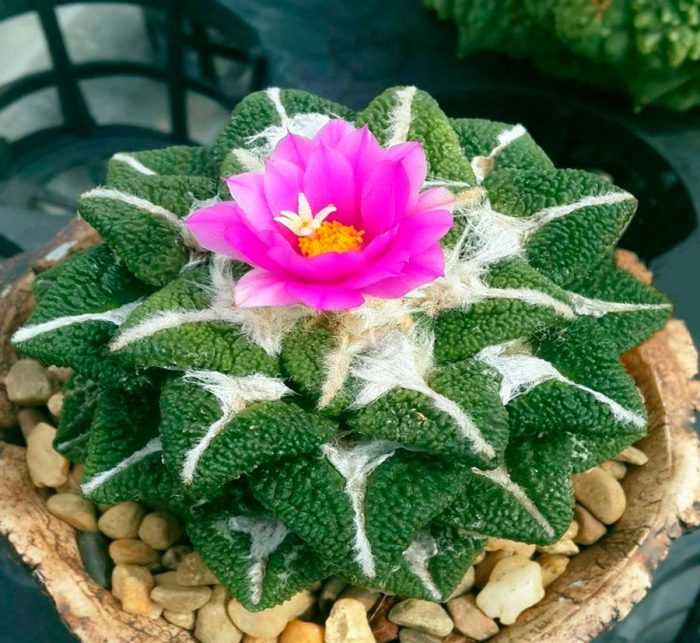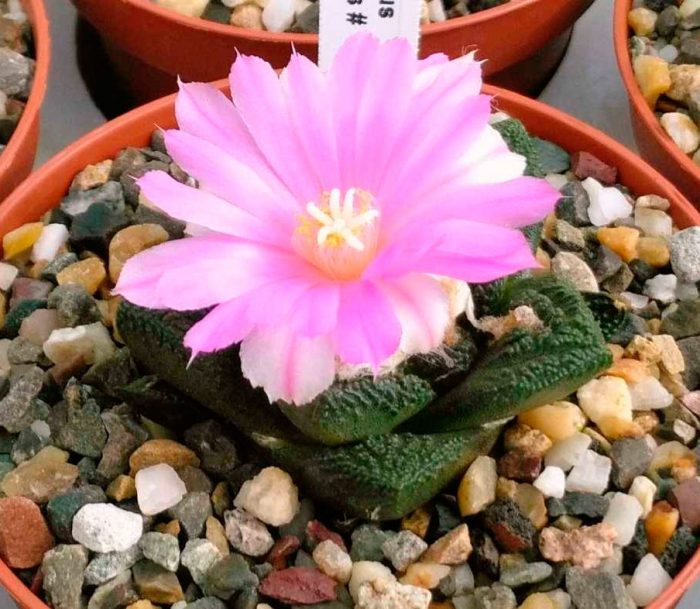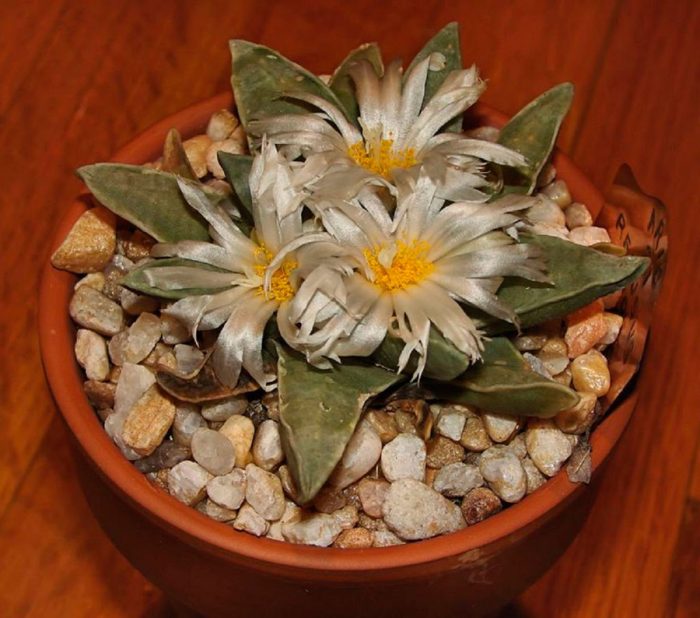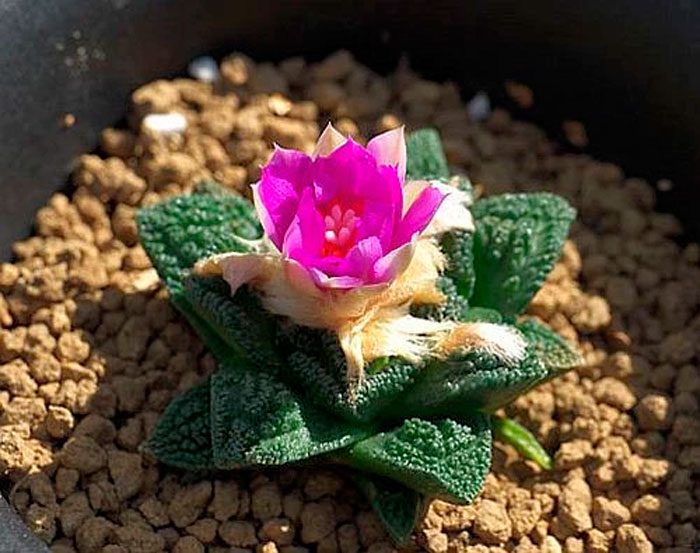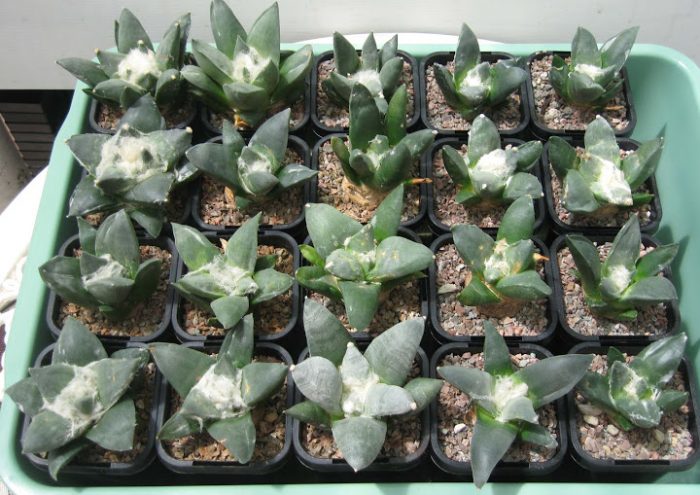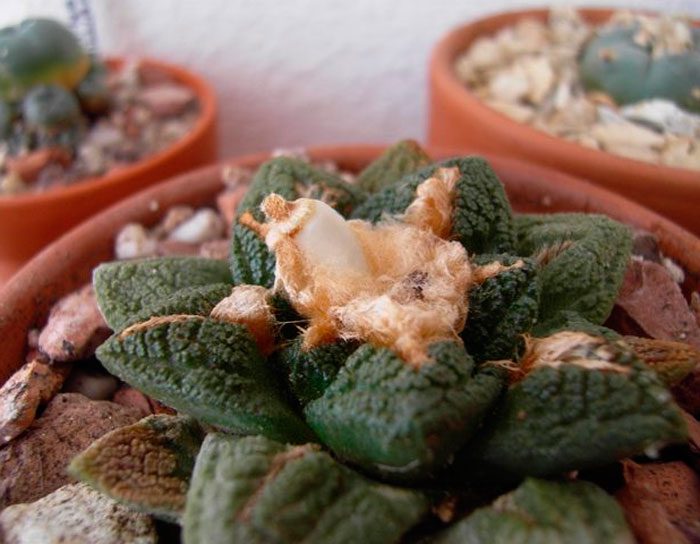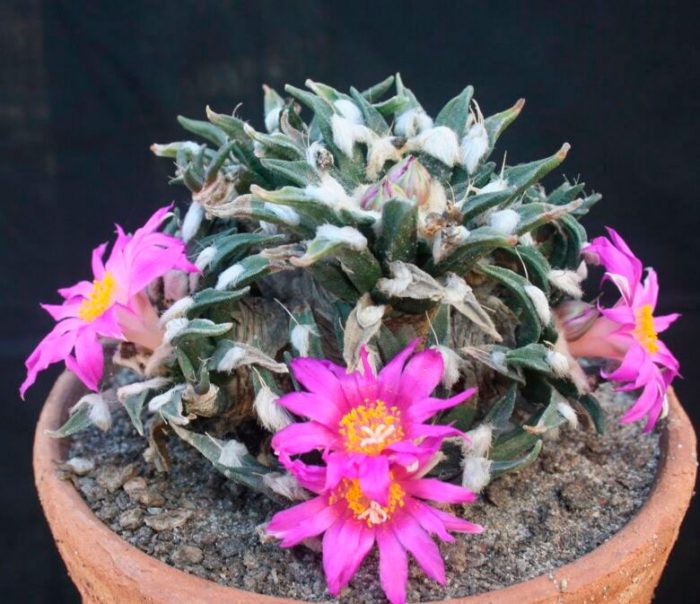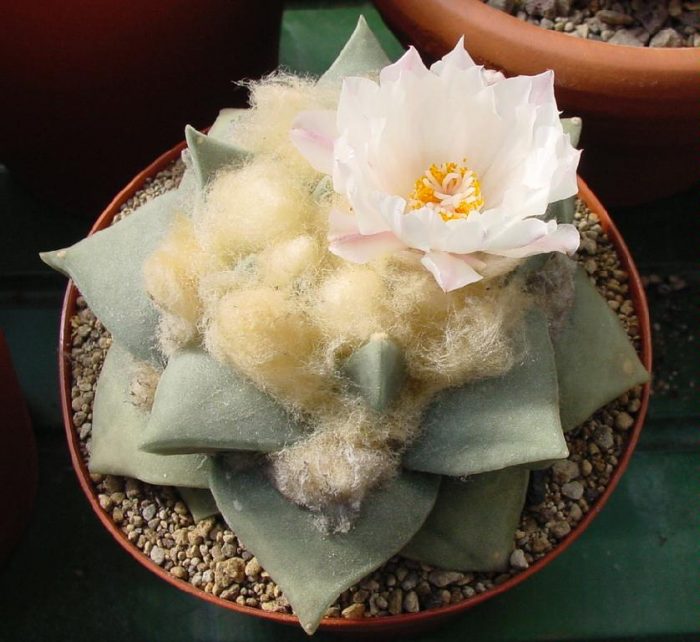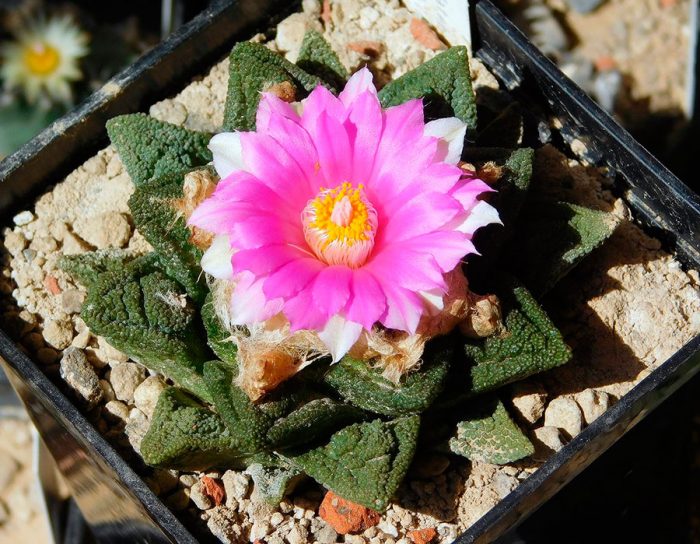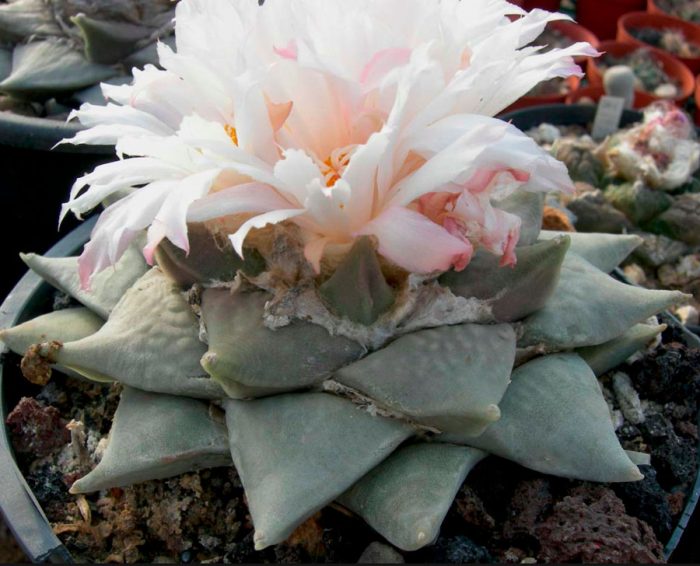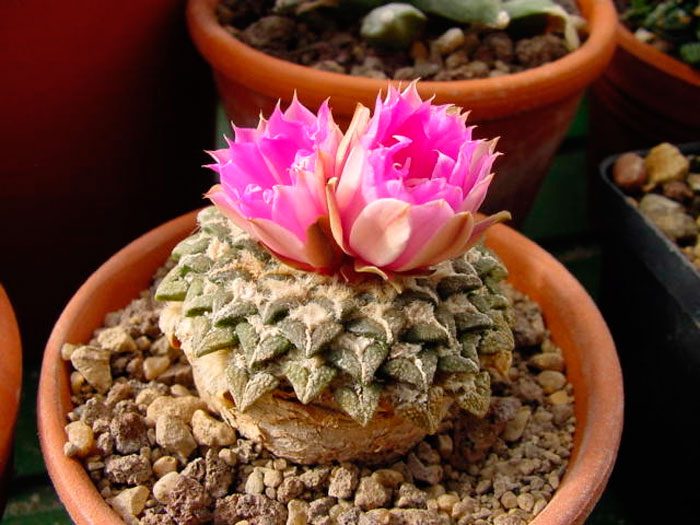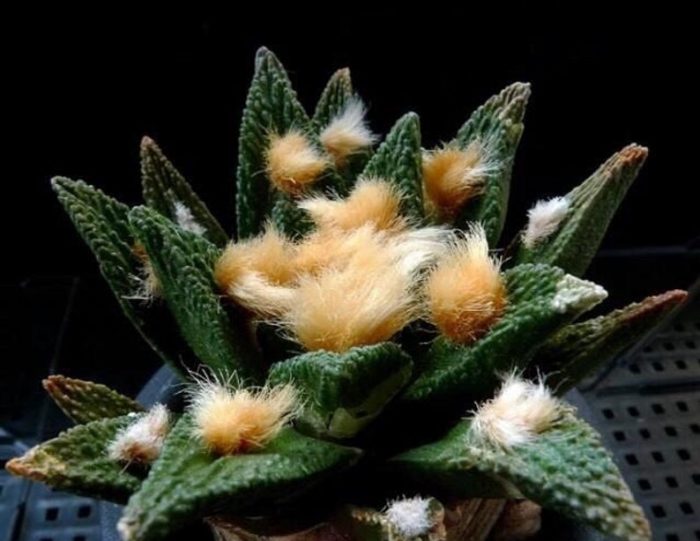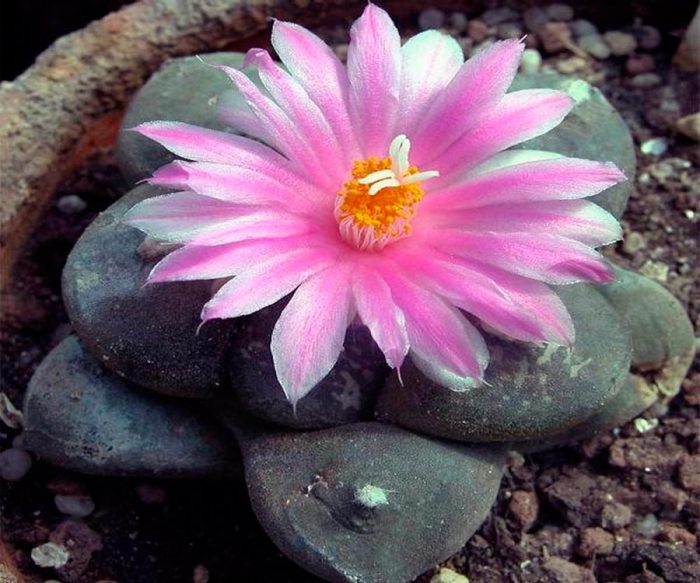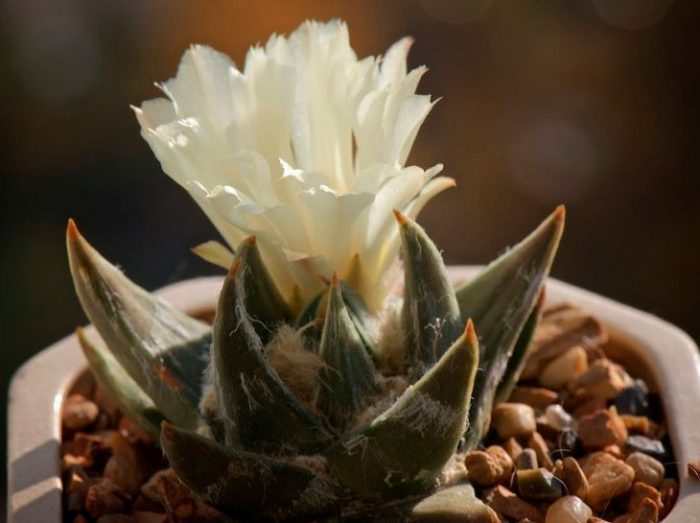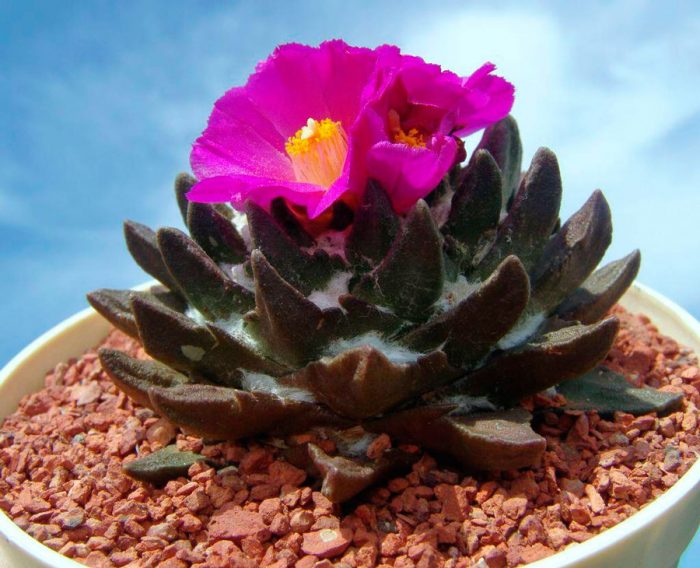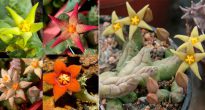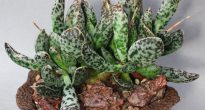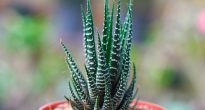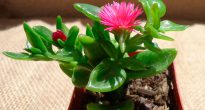The ariocarpus plant belongs to the Cactaceae family. It is a succulent with a low and slightly flattened stem, which can be brown or gray. A low stem in diameter can reach 12 centimeters, its surface is covered with papillae, and areoles are already on them. The needles growing from the areoles are rudimentary (underdeveloped). In diameter, campanulate flowers can reach about 50 mm. They can be colored red, yellow or white. In nature, this plant can be found in the southern part of North America. The genus Ariocarpus unites about 10 species.
Content
- 1 Home care for ariocarpus
- 2 Reproduction methods
- 3 Diseases and pests
- 4 Types of ariocarpus with photos and names
- 4.1 Ariocarpus agavoides (Ariocarpus agavoides)
- 4.2 Blunted ariocarpus (Ariocarpus retusus)
- 4.3 Cracked ariocarpus (Ariocarpus fissuratus)
- 4.4 Ariocarpus scaly (Ariocarpus furfuraceus)
- 4.5 Ariocarpus kotschoubeyanus (Ariocarpus kotschoubeyanus), or kotzebue
- 4.6 Ariocarpus bravo (Ariocarpus bravoanus)
- 4.7 Lloyd's ariocarpus (Ariocarpus lloydii)
- 4.8 Ariocarpus triangular (Ariocarpus trigonus)
- 4.9 Keel-shaped ariocarpus (Ariocarpus scapharostrus)
Home care for ariocarpus
Indoor Ariocarpus is distinguished by its unpretentiousness and undemanding care. Thanks to this, even a novice florist can cultivate it.
Illumination
Such a plant needs a lot of bright light, which must be diffused. The duration of daylight hours should be at least 12 hours.
Temperature regime
In summer, the cactus grows normally at any temperature. In winter, the temperature must be lowered to 12-15 degrees, but it should not fall below 8 degrees, otherwise it can lead to the death of the bush.
Substrate
To grow ariocarpus, sandy soil is used, and there should be almost no humus in it. Some cactus growers use coarse river sand for planting such a plant. In order to prevent the appearance of rot, it is recommended to combine the finished substrate with a small amount of charcoal and brick chips (small pebbles).
It is recommended to grow such a cactus in a clay pot, as it has fewer moisture problems. After planting, it is recommended to cover the surface of the soil mixture in a pot with small stones.
Watering
Watering should be very sparse, since this plant almost does not need them. Water the bush only after the earthen lump in the pot is completely dry. During the entire dormant period, the cactus is not watered.The water used for irrigation should be settled and at room temperature. It is poured gently onto the surface of the substrate, avoiding liquid getting on the stem. It is impossible to moisten the bush from a spray bottle, as this can cause the development of rot.
Top dressing
Ariocarpus is fed 2 times a year and only during the growing season. Experts advise using fertilizer for cacti and succulents for this.
Transfer
Ariocarpus is transplanted only if necessary, when it becomes very cramped in the pot. However, the transplant must be carried out carefully, because the root system of this plant is very fragile. During transplantation, the earthen lump in the pot must be completely dry. This procedure is carried out by the transshipment method, and they try to keep the clod of earth on the roots intact.
Reproduction methods
You can propagate indoor ariocarpus by seed and grafting. Both methods are distinguished by their complexity, in this regard, many flower growers prefer to buy a finished plant that has already turned 2 years old.
Growing from seeds
Take a small bowl and fill it with a light sandy soil mixture, and it should be slightly damp. Sow seeds and keep the substrate surface moist at all times. Move crops to a warm place (at least 20 degrees). After the seedlings that appear are four months old, they are picked. Then young bushes are removed to the greenhouse. In such conditions, the bush should grow for about a year and a half, and then it is moved to the windowsill. It is necessary to accustom the cactus to new conditions gradually.
Reproduction by grafting
It is necessary to graft Ariocarpus on another cactus, for example, for this you can use Myrtillocactus or Eriocereus Yuzberti. First, cut off the material for grafting, for this use a sharp, dry and disinfected instrument. The grafted bush is kept in a greenhouse for almost 2 years, where it will grow and get stronger.
Diseases and pests
Ariocarpus is highly resistant to both diseases and pests. An injured escape is able to recover very quickly. This plant can only suffer from rot, the development of which is facilitated by an incorrect watering regime. The decayed stem can be cut off, and the bush will be able to recover after a while. When rot appears on the roots, the bush is thrown out, because it can no longer be saved.
Types of ariocarpus with photos and names
Ariocarpus agavoides (Ariocarpus agavoides)
The rounded stem has a spherical shape. It is covered with non-ribbed smooth skin. The papillae of this species are flattened and thick. If you look at the bush from above, then its shape will be more like a star. The large flowers are dark pink.
Blunted ariocarpus (Ariocarpus retusus)
The stem of this plant is slightly larger when compared to the previous species. The upper part of the stem is covered with felt hairs of brown or white shade. The papillae are pyramidal. During flowering, the bush is decorated with pink flowers.
Cracked ariocarpus (Ariocarpus fissuratus)
The stem of this species is very dense and looks more like a stone, which consists of lime. The shoot protrudes quite a bit from the soil, since it is deeply embedded in it. The surface of the part of the stem that protrudes above the ground is covered with hairs, which makes the bush look more attractive. This plant can be easily distinguished from a stone when a large flower of pink or purple color opens on it.
Ariocarpus scaly (Ariocarpus furfuraceus)
This species is noticeably larger than the others. Its stem can reach 10 to 13 centimeters in height, and up to 20 centimeters across, and even slightly more. The papillae are triangular. The surface of the shoot is rough, which is reflected in the name of the species. Bell-shaped flowers can be cream or white.
Ariocarpus kotschoubeyanus (Ariocarpus kotschoubeyanus), or kotzebue
This species is decorative because there are stripes on its stem. A lilac flower opens on a star-shaped stem during flowering.
Ariocarpus bravo (Ariocarpus bravoanus)
The low stem of this species is slow growing. Not very large flat papillae are painted in a dark shade. There is a whitish felt on the surface of the upper part of the stem. On the edges of the papillae there are woolly areoles. Not very large flowers are painted bright pink.
Lloyd's ariocarpus (Ariocarpus lloydii)
In this species, the shoot is also round and flat, and outwardly it is also very similar to a stone. The flowers can be purple or pink.
Ariocarpus triangular (Ariocarpus trigonus)
The species got its name thanks to the pointed triangular papillae. In diameter, pale yellow flowers can reach about 50 mm.
Keel-shaped ariocarpus (Ariocarpus scapharostrus)
It also has a flattened green stem. On its surface there are very few keeled papillae. In the sinuses there is a white pile, and the flowers are painted in a purple-pink hue.

